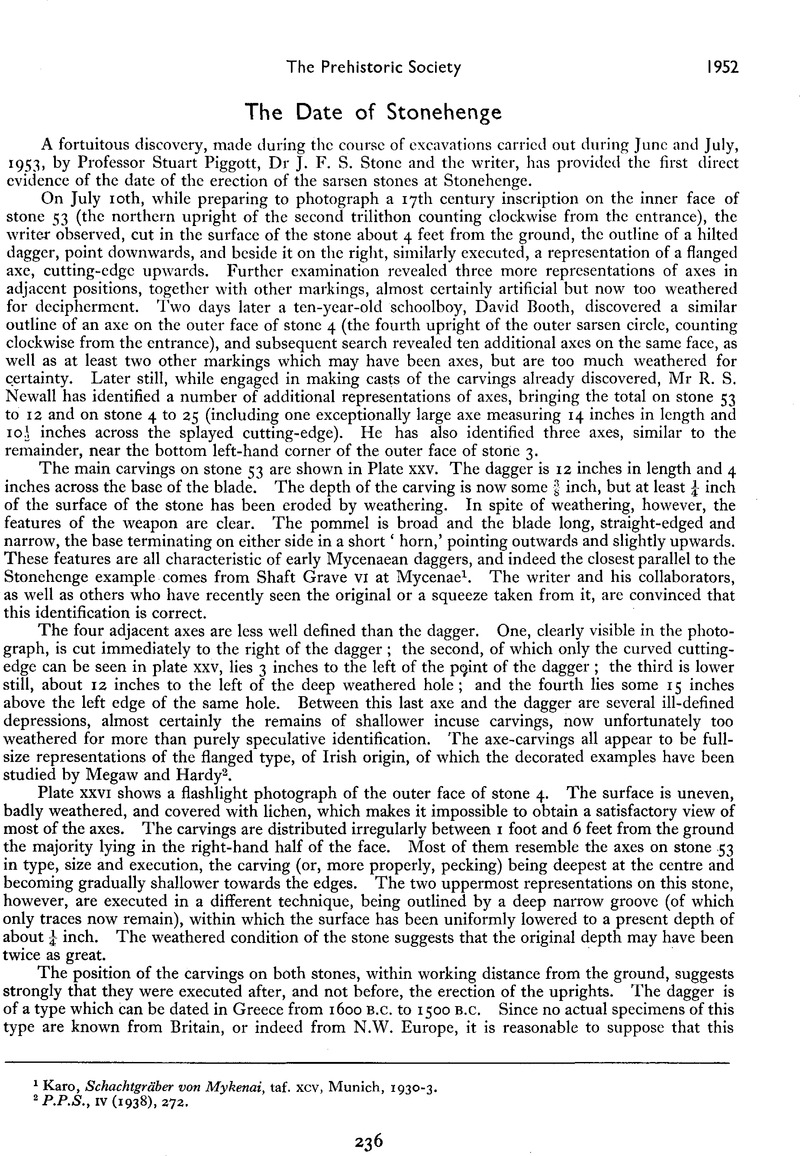Article contents
The Date of Stonehenge
Published online by Cambridge University Press: 27 May 2014
Abstract

- Type
- Notes
- Information
- Copyright
- Copyright © The Prehistoric Society 1952
References
page 236 note 1 Karo, , Schachtgräber von Mykenai, taf. XCV, Munich, 1930–1933Google Scholar.
page 236 note 2 P.P.S., IV (1938), 272Google Scholar.
page 237 note 1 Ant. Journ., XIX (1939), 291Google Scholar.
page 237 note 2 ibid., 292, fig, 1, 1.
page 237 note 3 Arch. Journ., CVIII (1952), 16Google Scholar.
page 237 note 4 ibid., 15.
page 237 note 5 Similar carvings of axes are also known from Nether Largie and Ri Cruin in Scotland (P.S.A.S. VIII (1869–1870), 378Google Scholar; ibid. LXV (1930–31), 269; Childe, , Prehist. Scot. (1935)Google Scholar, Pl. XI.
page 237 note 6 Though Professor Childe has recently pointed out (in a letter to the Times on July 25th, 1953) that the constructional and optical refinements of Stonehenge are not themselves paralleled in Mycenaean architecture, it is surely more fitting to see them as the product of the relatively sophisticated civilization of Mycenae, rather than of the essentially barbarous, even if commercially successful, aristocracy of our native Wessex Culture.
- 2
- Cited by


